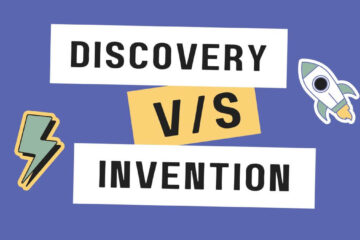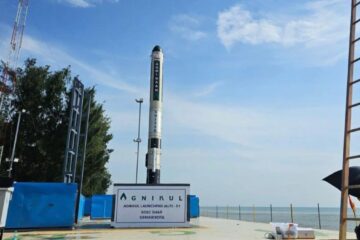NASA Parker Solar Probe: Our understanding of the Sun is being revolutionized by NASA’s historic Parker Solar Probe mission, which is measuring how changing solar conditions can affect Earth and other planets. In order for humanity to get the closest observations of a star, Parker Solar Probe travels through the Sun’s atmosphere, closer to its surface than any previous spacecraft. A part of NASA’s Living With a Star program, Parker Solar Probe explores aspects of the Sun-Earth system that have a direct effect on society and life. Goddard Space Flight Center in Greenbelt, Maryland, manages the Living With a Star flight program for NASA’s Science Mission Directorate in Washington. NASA manages the mission through the Johns Hopkins Applied Physics Laboratory in Laurel, Maryland. The APL is responsible for designing, building, and operating the spacecraft.
Check James Webb Space Telescope First Image
- Recently, on 9th February 2022 the Parker Solar Probe has captured its first images of Venus from space using visible light. This was the first visible light image of Venus captured by the probe during a flyby in July 2020. A full analysis of the images and video will be published in the journal Geophysical Research Letters on Feb. 9, 2022. Scientists can use these images to understand how similar the Earth and Venus’s surfaces are.
- On 14th December 2021, Parker Solar Probe became the first space probe to enter into the solar atmosphere.
Read About: International Liquid Mirror Telescope
Table of Contents
NASA Parker Solar Probe Mission Overview
| Mission Name | Parker Solar Probe |
| Previous Name of the Mission | Solar Probe (before 2002) Solar Probe Plus (2010–2017) Parker Solar Probe (since 2017) |
| Mission Type | Heliophysics |
| Operated By | NASA / Applied Physics Laboratory |
| Mission Duration | 7 years (planned) |
| Launch Date | 12 August 2018, 07:31 UTC |
| Rocket | Delta IV Heavy / Star-48BV |
| Launch Site | Cape Canaveral, SLC-37 |
Know About Artemis Mission of NASA – A Journey To The Moon and Beyond
Parker Solar Probe Facts – Check Interesting Facts Related To Famous Sun Probe
Below are some of the most important facts related to the Parker Solar Probe Mission. These might seem trivial information at first but these are the best pieces of information to understand the foundational objective of the Parker Sun Probe.
- In honor of nonagenarian physicist Eugene Newman Parker, professor emeritus at the University of Chicago, it became the first NASA spacecraft named after a living person.
- Below the spacecraft’s high-gain antenna was a plaque mounted with a memory card containing the names of more than 1.1 million people. On the card are photos of Parker and a copy of his 1958 scientific paper, which predicts important aspects of solar physics
- The spacecraft became the closest artificial object to the Sun ever on 29 October 2018, at about 18:04 UTC.
- December 2018 marked the first transmission of scientific observations from the probe.
- Using repeated gravity assists at Venus, the Parker Solar Probe mission will incrementally decrease its orbital perihelion to reach a final altitude.
- Parker Solar Probe is the first spacecraft to have flown into the low solar corona.
You May Also Like To Read About the First Ever REAL Black Hole Image
Parker Solar Probe Mission Timeline – Check List of All Events
This space probe which has seven years planned duration will pass through many phases to reach the destination. Below we have mentioned the timeline of the Parker Space Probe with brief information. You can have a brief idea of its operational history and the future of the space probe.
| Date | Event Name | Details |
| 12 August 2018 | Launch | NASA Parker Solar Probe launch took place with the objective of observe the outer corona of the Sun. |
| 3 October 2018 | Venus flyby #1 | Flybys 1 & 2 took place at the same point in Venus’s orbit. |
| 26 December 2019 | Venus flyby #2 | |
| 11 July 2020 | Venus flyby #3 | Flybys 3 & 4 took place at the same point in Venus’s orbit. |
| 20 February 2021 | Venus flyby #4 | |
| 16 October 2021 | Venus flyby #5 | Flybys 5 & 6 will take place at the same point in Venus’s orbit. |
| 21 August 2023 | Venus flyby #6 | |
| 6 November 2024 | Venus flyby #7 | Last Venus flyby |
| 12 December 2025 | Perihelion #26 | Last Perihelion |
Chcek Facts, Discoveries & Contribution of NASA’s Chandra X-ray Observatory
Why is it Important to Study Sun & Solar Wind? – Understanding Objectve of the Mission
- The Sun is the only star that we can study closely. We can learn about other stars throughout the universe by studying the star we live with.
- Life on earth depends on sunlight and the heat provided by the Sun. As we learn more about it, the better we can understand how life on Earth developed.
- Other things that the Sun does to the Earth are less well known. The solar wind originates from the Sun; it is a flow of ionized gases flying past Earth at over 500 kilometres per second (one million miles per hour).
- Satellites’ orbits can be affected by space weather, which can shorten their lifetimes or interfere with electronics onboard. We can protect our satellites better if we know what causes space weather – and how to predict it. Space weather refers to a variety of changes in near-Earth space caused by disturbances in the solar wind and pumping energy into the radiation belts.
- A large part of the solar system is also filled with solar wind, dominating the space environment far past Earth. It is imperative that we understand the environment of space as early as seafarers did the ocean because we send spacecraft and astronauts further and further from home.
Know About Nora Al Matrooshi – First Arab Woman Astronaut (Bringing Gender Equality In Space)
Discoveries From NASA’s Parker Solar Probe
This solar probe of NASA has unearthed some of the fundamental problems. Below listed are the findings of the Parker solar probe.
- The first four research papers which describe the findings of the spacecraft during its first two dives toward the Sun were published on 4 December 2019. Researchers reported both the strength and direction of the Sun’s magnetic field, as well as the unusually frequent and brief changes in the field’s direction.
- According to these measurements, Alfvén waves are the most likely candidates to explain the coronal heating problem. Nearly a thousand “rogue” magnetic waves were observed in the atmosphere of the sun, which instantly increased the solar wind speed by up to 300,000 miles per hour (480,000 km/h) and in some cases completely reversed the local magnetic field.
- In the studies, scientists also demonstrated that “reversals in the Sun’s magnetic field are often associated with localized enhancements in the plasma velocity (the velocity in the direction away from the centre of the Sun)”. A surprisingly large azimuthal component of plasma velocity (the velocity perpendicular to radial direction) was found to result from the slingshot force with which the Sun’s rotation enables plasma to leave the corona once it is liberated from its magnetic field.
- Parker discovered a cosmic dust-free zone stretching 3.5 million miles (5.6 million kilometres) from the Sun. This resulted from the vaporization of cosmic dust particles by the Sun’s radiation.
Read Immportnat Information About NASA Earth Observation Satellites
NASA Parker Solar Probe Instruments & Major Investigations
While gathering data in the Sun’s corona, the Parker Solar Probe comes closer to it than any spacecraft before. The instrument suites of the probe have been designed to withstand the high radiation and temperatures it will encounter as it characterizes the dynamic region close to the Sun by measuring particles, electric fields, and magnetic fields. Major instruments with their investigation are mentioned below. (source: PSP Instruments)
1. Electromagnetic Fields Investigation (FIELDS)
The experiment will involve direct measurement of electric and magnetic fields, radio waves, Poynting flux, absolute plasma density, and electron temperature. The device consists of two flux-gate magnetometers, a search-coil magnetometer, and five plasma voltage sensors. UC Berkeley’s Stuart Bale is the principal investigator.
2. Wide-field Imager for Solar Probe (WISPR)
Coronal and inner heliosphere images will be acquired by these optical telescopes. Naval Research Laboratory’s Russell Howard is the principal investigator.
3. Solar Wind Electrons Alphas and Protons (SWEAP)
As part of this investigation, electrons, protons, and helium ions will be counted and properties such as velocity, density, and temperature will be measured. The Solar Probe Analyzer (SPAN, two electrostatic analyzers) and the Solar Probe Cup (SPC, a Faraday cup) comprise its primary instruments. University of Michigan’s Justin Kasper and Smithsonian Astrophysical Observatory are the principal investigator.
4. Integrated Science Investigation of the Sun (IS☉IS)
The investigators will measure energetic electrons, protons, and heavy ions. It contains two independent Energetic Particle Instruments, the EPI-Hi and EPI-Lo, which study higher and lower energy particles respectively. Princeton University’s David McComas is the principal investigator.
5. Heliospheric Origins with Solar Probe Plus (HeliOSPP)
To maximize the scientific return from the mission, this theory and modeling are required. UCLA’s Marco Velli and the Jet Propulsion Laboratory (JPL) are the principal investigators.
NASA Parker Solar Probe FAQs
NASA’s Parker Solar Probe was launched on August 12, 2018.
It’s not about reaching at the sun but about getting closer and closer to it. On 14th December 2021, the parker solar probe touched the sun for the first time. As of now it is getting more close to the sun.
It seems so but to make it functional till the mission duration the probe is provided with a 4.5-inch-thick carbon-composite heat shield. The parker solar probe heat shield is capable of enduring temperatures up to 1,377 degrees celsius.
The fastest speed the probe has acquired is 586,836 kph as measured on November 21, 2021, 08:24 UTC.
The probe is named after Eugene Newman Parker, a pioneer in heliophysics who discovered supersonic solar wind.



0 Comments